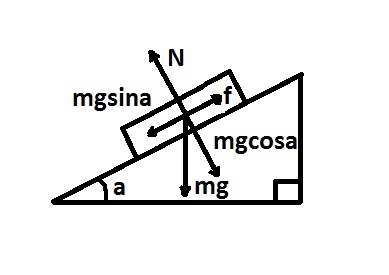Normal force
This online calculator calculates the normal force's strength from the object's mass, the gravitational field strength, and the inclined surface's angle measured from the horizontal.
In mechanics, the normal force Fn is the component, perpendicular to the surface (the surface being a plane) of contact, of the contact force exerted on an object by, for example, the floor or wall's surface preventing the object from falling. Here "normal" refers to the geometry terminology for being perpendicular, as opposed to the common language use of "normal" meaning common or expected.

Where an object rests on an incline, the normal force is perpendicular to the plane the object rests on. Still, the normal force will be as large as necessary to prevent sinking through the surface, presuming the surface is sturdy enough. The strength of the force can be calculated as:
where,
- Normal force modulus,
- the mass of the object,
- the gravitational acceleration (default value corresponds to Earth's gravitational field strength),
- the angle of the inclined surface measured from the horizontal.
Comments